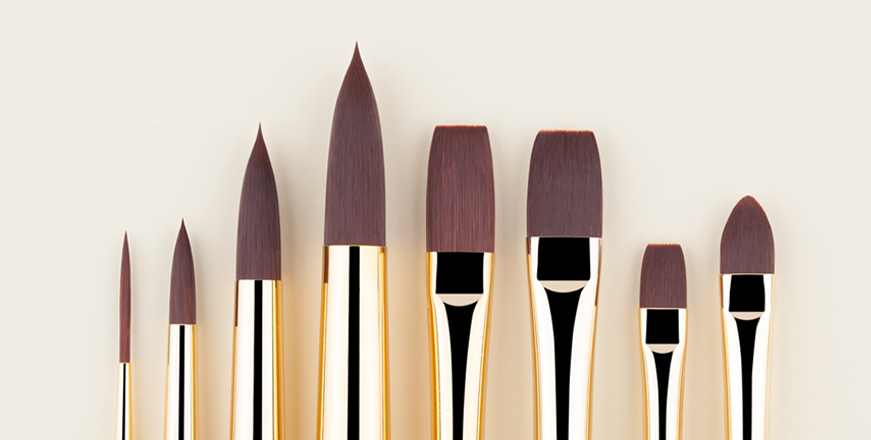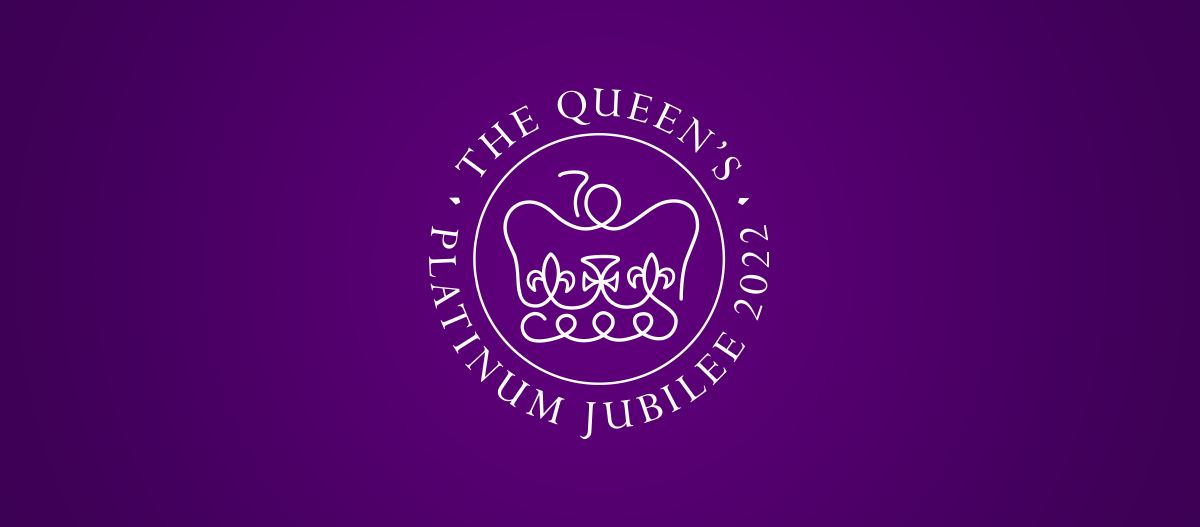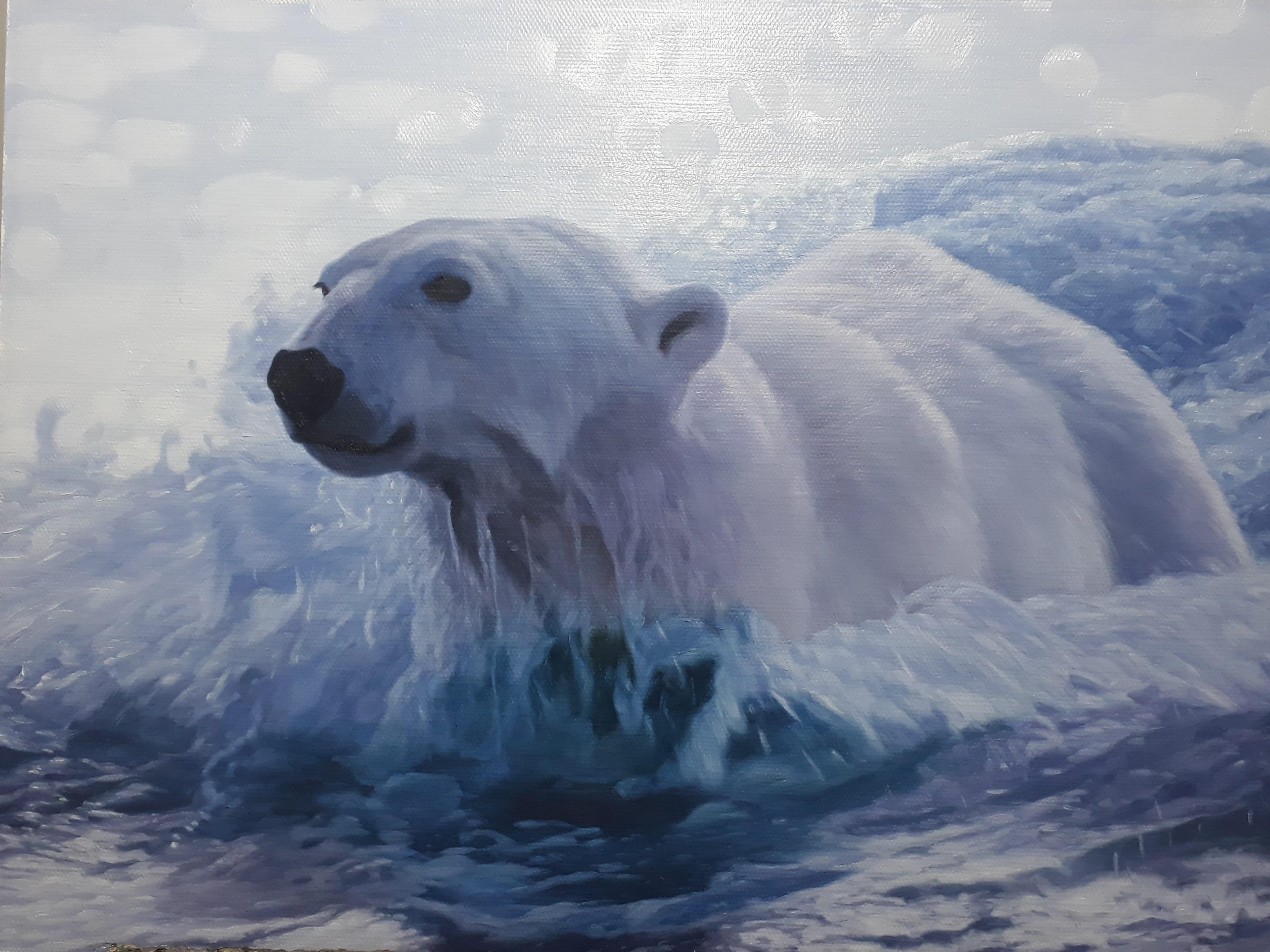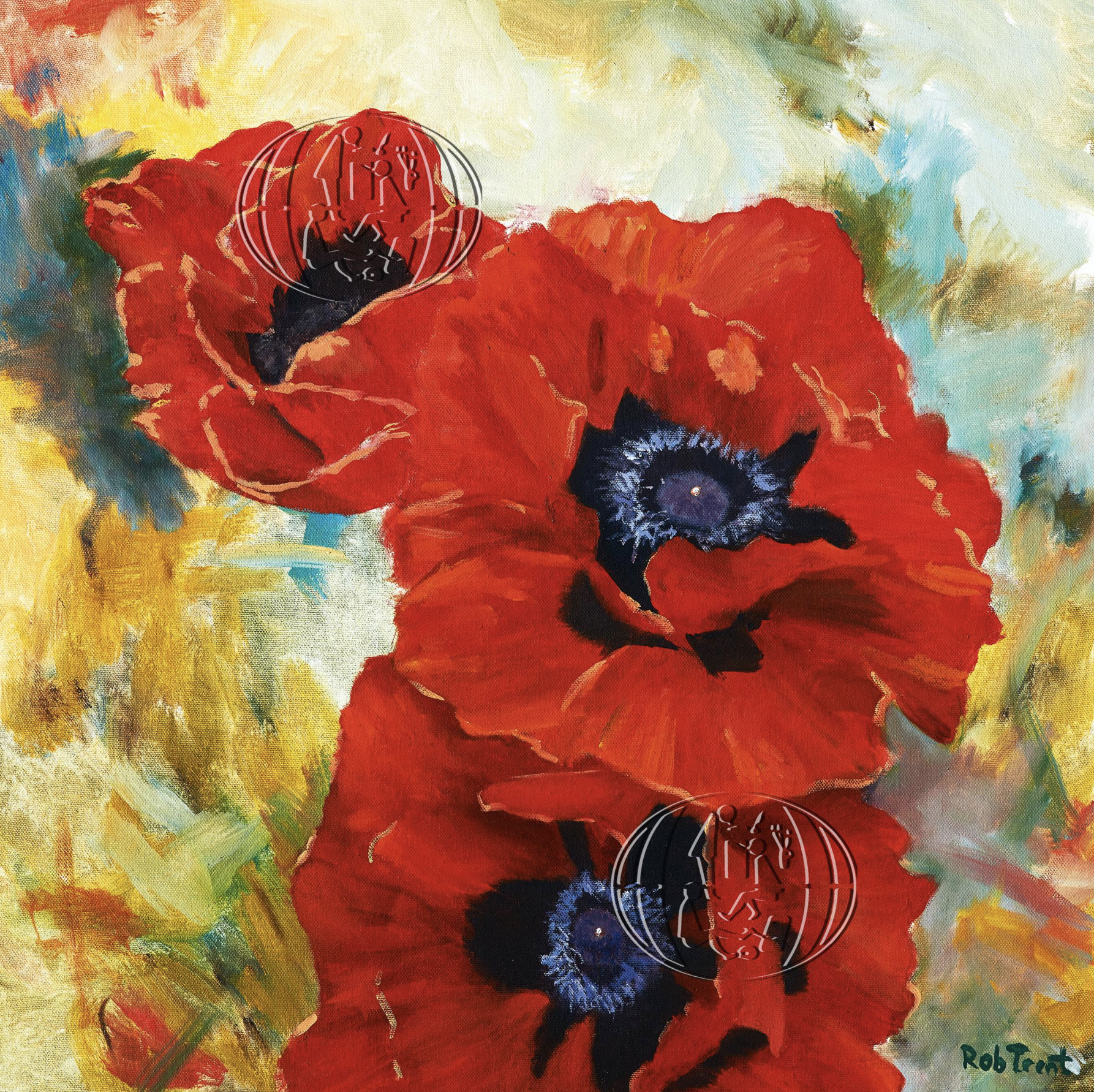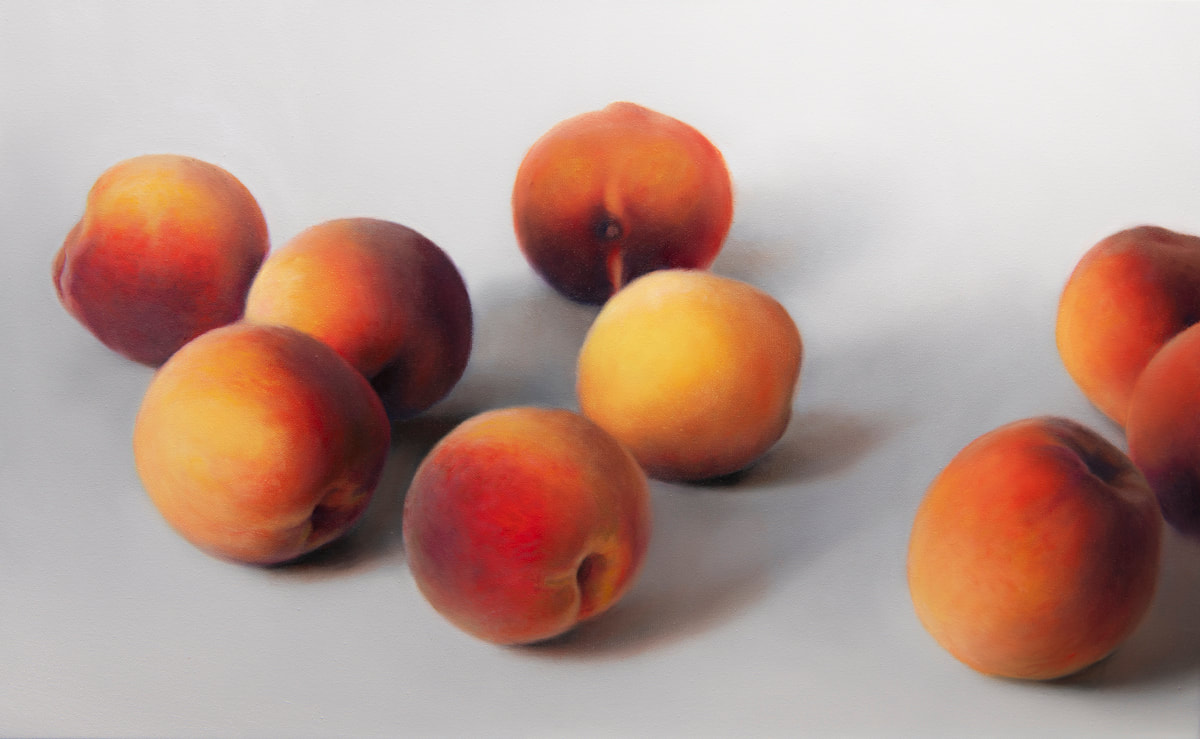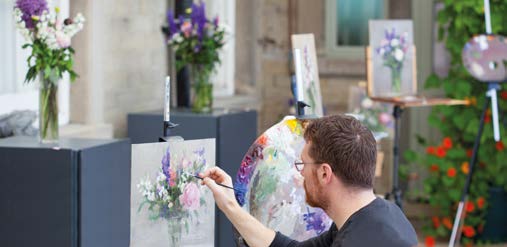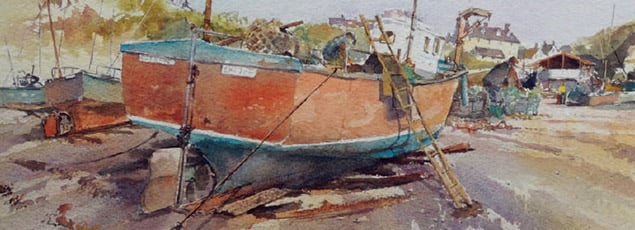
We Talk To Painter Roger Jones
Roger formerly directed wildlife films as a Senior Producer for the renowned BBC Natural History Unit in Bristol, England for series such as The Natural World and Wildlife on One.
Recently while completing a series of oil paintings, I received the surprise and welcome gift of a watercolour painting brush from Rosemary. I work in oils and watercolour (something I can recommend for several creative reasons), and as I was intending to move on to new watercolour work, I felt inspired by the gift to give the brush a whirl along with a few other Rosemary brushes I use.
Fig 1. Roger Jones oil painting on location in North Wales.
Fig 2. Resultant oil sketch, almost complete.
In my approach to and use of watercolours and oils, I find that despite their obvious simple differences there are similarities they share. Such as, how atmospheric and moody effects make for an effective (and saleable) painting; how an understanding of tonal values is so crucial and particularly, in the discipline and techniques (what I call ‘trade secrets’ and ‘good habits’) of how their paints are applied. Both media are to be enjoyed because they are different challenges and can be met by skills, techniques, good habits and disciplines common to both. Try painting the same subject in both and you’ll discover the differences and the delights. Your work will have broader appeal too.
Fig 3. Atmosphere-into the Light.
In either medium I need very few brushes.
Fig 4. The brushes I use.
From left to right: RJB SP 12; a large Squirrel mop; a very worn synthetic/hair mixture to mix paint on the palette. I always use tube paints, mostly Winsor and Newton. Bad as this brush looks it does the job and I’ve had it so long the name has worn away. Why damage your expensive Kolinsky sables by scrubbing away at paint?
Next a Series 88, size 10 (excellent for line and wash/wash and line work). Series 22, size 8 (the gift). Series 22, size 4 (not here) is also useful. And that’s it, 6 at the most. (The sketch behind the brushes was done with the 22, size 8 alone and a limited palette of: Indigo/Raw Sienna/Light Red. So what might be some of these good habits? It’s important as to exactly how these few brushes are used. If ‘every picture tells a story’, it is the many different marks you make which become the ‘words’ in your painting ‘vocabulary’. The more marks/words the more ‘articulate’ you become. With practice and experimenting ‘fluency’, your individual ‘style’ of expression should emerge.
Fig 5. Limited palette, one brush painting:
Below Pienza, Tuscany.
It’s possible to coax all sorts of marks out of each brush depending on how you handle it and crucially how you load it; plus understanding the consistency of paint needed, thick, thin or thinner. Oils too. Also do not over mix paints. Allow those lovely colours, 1, 2, 3, even 4, to mingle in the brush, on the paper, from sopping wet to dry. Resulting in – what I call ‘prismatic’ rainbow effects. ‘Mingle not mix’ is my mantra. This only works of course if you are disciplined enough not to go over the same brush stroke twice. ‘One stroke and move on’ the mantra here. Continued overleaf.
“LET the BRUSH, paints, PAPER & water WORK their MAGIC.”
Over mixing paints with repetitive brush strokes is for decorators not we painters. Mingling is so useful where observed un-interesting surfaces can be given more life and interest, e.g. vegetation. The resulting variegation does the job.
Fig 6. Old Barn and Tractor.
Fig 7. The Beach at Beer.
You don’t have to re-create what you see, just re-design. Experiment with limited palettes to hone your skills at mixing and mingling. See what alternative lookalike colours you can discover. The results will be more compelling than reality, the ‘art of the possible’. One of the challenges of painting is to explore how to interpret a subject in differing ways, and working in two mediums helps. There are fundamental good habits, disciplines, techniques and your own trade secrets to discover to yours and others delight.
Please visit Roger’s site: www.roger-jones.co.uk
For more information about Roger Jones brush sets please visit our site and search for Roger Jones.
HOW DO YOU CHOOSE YOUR MEDIA?
Oils and watercolours for me, have equal preference. I think it’s important to work across more than one medium as they pose different, but enjoyable challenges. And your work will have broader appeal, (and sales you hope). Despite obvious differences I find they do have similarities, particularly in their handling.
WHICH ONE TO USE?
It depends on my personal mood as much as the subject, so I keep both sets of kit in the back of the car, plus important sketch books.
FAVOURITE COLOURS?
In oils-cobalt violet, naples yellow, flesh tint, buff titanium, NOT just for their actual colour but for how they can be combined, even mixed, with other colours. Watercolours-lots. About seventeen at the last count! But I usually use fewer.
DO YOU RUN WORKSHOPS AND DEMOS?
I offer demos and workshops to art societies countrywide and each July and August contribute to the Marlborough College Summer School, this year three courses; one watercolour, two in oils. I have an inclusive view of tutoring and being self-taught and will show/tell all I know; no secrets. I prefer working 1:1 or 1:2, and provide all the best
materials, including lunch!
HOW MANY BRUSHES DO YOU USE?
The fewer the better, in either medium, as this obliges you to discover the wide range of useful marks you can make. ‘Necessity is the mother of invention’ remember!
WHAT WOULD YOU SAY TO A YOUNGER SELF OR ANY OTHER ASPIRANT?
Be wary of the distraction of fads and fashions; work dressed in the ‘Emperor’s new clothes’. Be true to yourself, and honest in your work. Have one man shows, then find a gallery who is REALLY interested in you, your work, and offers encouraging feedback. Use the best materials you can afford, as painting is just like cooking. And lastly, listen to your partner as he or she represents the critical viewing public, if they say “WOW!” to a painting, great. If they say crushingly, “WHY?” you are in trouble!
Images courtesy of Roger Jones.

